
7 Graffiti Murals You Need to See
Urban art is any artistic manifestation carried out on the streets, such as paintings, graffiti, sculptures, living statues and other presentations, as opposed to acts of vandalism. These manifestations take place in public spaces (buildings, houses, tunnels, overpasses, etc.) and interact directly with the public passing by.
In Brazil and around the world, urban art has been gaining more and more recognition and followers. Therefore, if you enjoy this form of artistic expression and want to incorporate it into your architectural projects, I invite you to read this content. In this post, we will highlight relevant information about urban art, as well as share several murals made in graffiti by talented artists. Check it out!
What is urban art?
Urban art is any artistic manifestation carried out on the streets, such as paintings, graffiti, sculptures, living statues and other presentations, as opposed to acts of vandalism. These demonstrations take place in public spaces (buildings, houses, tunnels, overpasses, etc.) and interact directly with passersby.
What is the purpose of urban art?
The purpose that guides the practice of urban art is precisely to bring accessibility, visibility and contemplation to an art that was previously only expressed in so-called “consecrated” places such as theaters, cinemas, libraries and museums and, therefore, restricted to only a portion of the population.
For artists, urban art does not need a cultural movement or recognition to happen, it only needs the streets. Through urban art, it is possible to spark reflections in passersby, as well as communicate struggles, protests and complaints that cover social and political issues.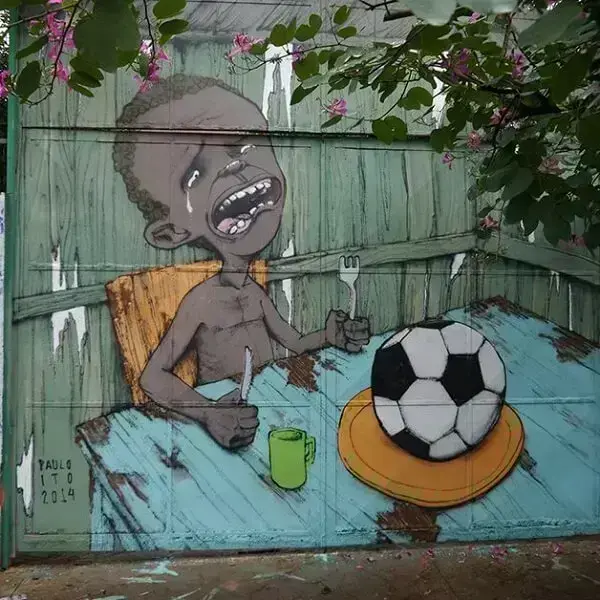
1 Urban art: graffiti mural by artist Paulo Ito in the Pompeia region - SP. Photo: Sampa Graffitti
What are the types of urban art?
Graffiti: considered the most popular form of urban art. Phrases and drawings usually made with spray paint cover the walls of houses, buildings, tunnels and streets. Over time, urban art made with graffiti has evolved and today it is possible to find 3D works that interact with the local nature.
Stencil: art very similar to graffiti. This artistic expression uses cut-out paper as a mold and spray paint to fix phrases and drawings;
Living statues: artists present themselves to the public painted and characterized as a form of tourist entertainment;
Individual or group presentations: these presentations can have a theatrical, musical or circus character;
Adhesive labels: also known as sticker art, this art comes from the form of expression of sticking stickers with messages or images in public spaces;
Posters: a model of urban intervention where posters are placed around the city;
Literary manifestations: use of poems expressed on benches, posts, walls, etc.;
Sculptures or other installations: objects or materials created to provoke reflection in passers-by and to change the local scene.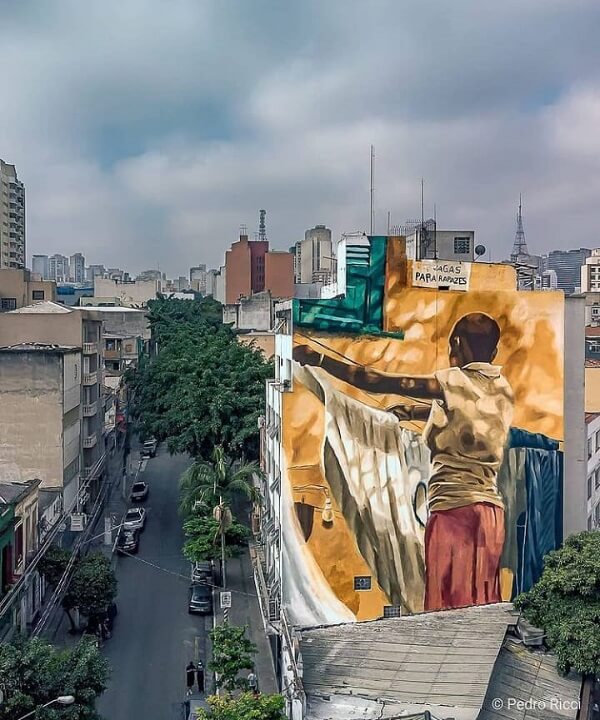
2 Urban art: mural by artist Diego Mouro (@diego.mouro) on Rua Treze de Maio, Bixiga. Photo: Pedro Ricci
What is the origin of urban art?
According to historical records, it can be said that urban art emerged in Pre-Socratic Greece, through the Homeric aedos (singers) who spoke in verse and music, in order to engage the public with their melody.
In the Middle Ages, urban art was transmitted through troubadours, noble artists responsible for reciting verses, melodies, poems and stories sung at city festivals and in palaces.
In the 1970s, urban art made its presence felt in New York City, in the United States, with a more dynamic and temporary characteristic.
See also: Learn how to mix colors and create incredible projects
See also: Smart Cities – Technology as a Solution to Urban Problems!
What is urban art like in Brazil?
In Brazil, the first signs of urban art appeared around the 1970s, more specifically in the city of São Paulo, through urban art expressed in graffiti on the walls of houses, buildings and tunnels.
It is worth mentioning that urban art expressed in graffiti emerged during a very turbulent period in the country, marked by the repression and censorship caused by the Military Dictatorship in Brazil. In the beginning, there was no aesthetic concern with images and drawings; it was enough that they were legible in order to convey the restlessness and dissatisfaction of society.
Eduardo Kobra, Os Gêmeos, Binho Ribeiro, Crânio, Anarkia Boladona (Panmela Castro), Nunca, Alex Hornest, Nina Pandolfo, Zezão, Nick Alive, Mari Pavanelli, Tinho, Paulo Ito and Diego Mouro are some of the talented graffiti artists who spread urban art in different corners of our country and around the world.
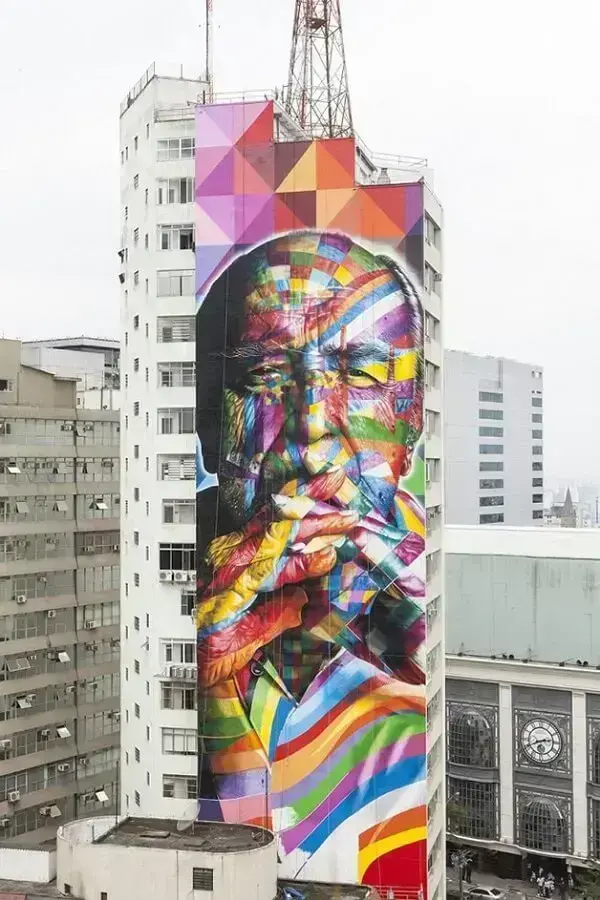
3 Oscar Niemeyer was honored by Eduardo Kobra's urban graffiti art on Avenida Paulista. Photo: Os Gêmeos
Nature and urban art change the streetscape
When nature and urban art mix, the representation and meaning of the work become even more special and valuable. This is because, in addition to these spaces attracting the attention of passers-by, they are also more entertaining than most projects without this interaction.
However, this is a different kind of work, since the artist has to find a suitable place for his creation, as well as be aware that the elements of nature are not static and permanent and, therefore, his urban art expressed in graffiti will not be either.
Plant beds, trees and green walls are some of the elements of nature that are normally used to interact with urban art made in graffiti.
Check out some more artistic graffiti interventions spread throughout Brazil and the world
Urban art: grand mural created by artist Natalia Rak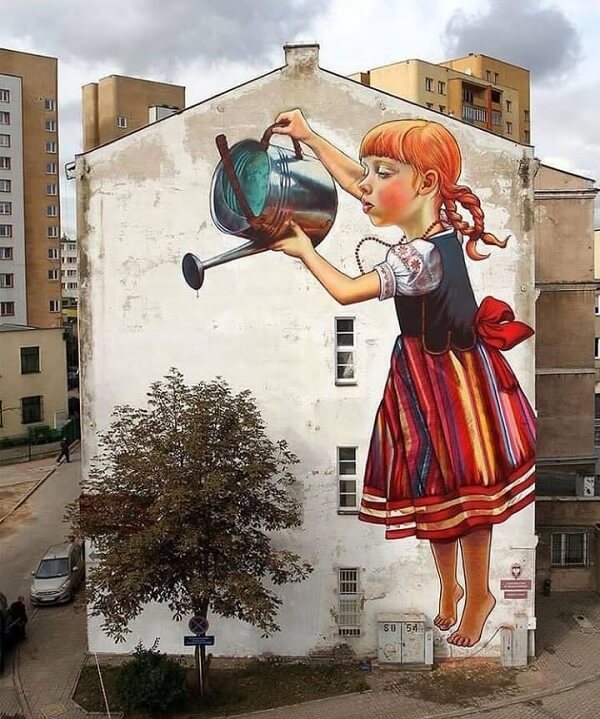
4 Urban art: grand mural created by artist Natalia Rak. Source: Instagram (@nataliarakart)
Urban art: artistic intervention made by artist Mari Pavanelli in the Real Parque community
5 Urban art: artistic intervention made by artist Mari Pavanelli in the Real Parque community. Source: Instagram (@maripavanelli)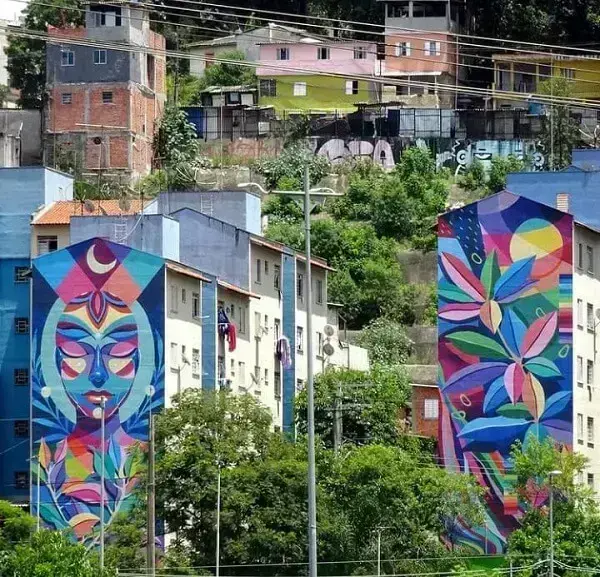
6. Example of urban art that interacts with nature. Source: Instagram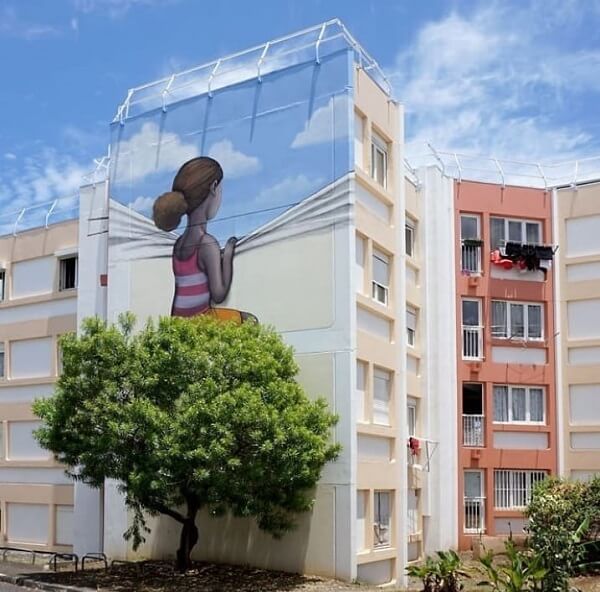
7. Urban art: graffiti mural by Eduardo Kobra in the Pinheiros region - SP. Photo: Sampa Graffitti
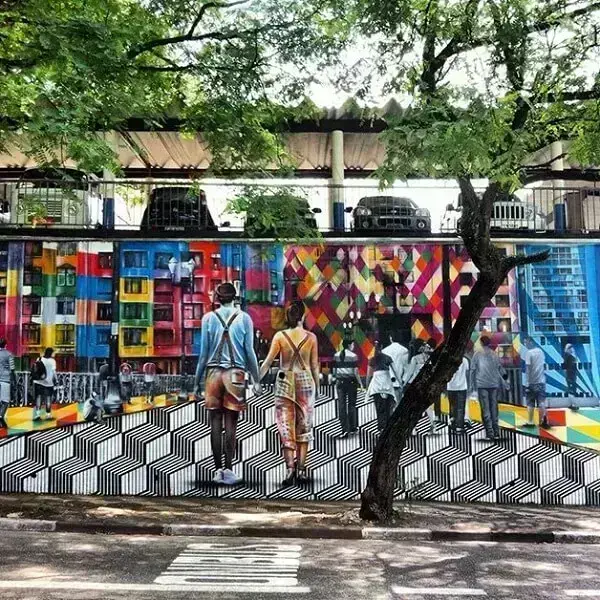
Which of these examples of urban art did you like the most? Share with us in the comments!
Source

- December 17, 2025
Visual Art in El Salvador: Between Memory, Resistance, and Renewal

- December 17, 2025
Visual Art in Cuba: A Window to Identity and Revolution


- December 17, 2025
Trump Peace Plan for Gaza He is not making Anything Great Again !


- December 17, 2025
Bilquis Evely - Brazil

- December 16, 2025
The 12th Tehran International Cartoon & Caricature Biennial / 2025

- December 16, 2025
Israeli violations of the ceasefire agreement in Gaza

- December 16, 2025
Impunity

- December 17, 2025
Visual Art in El Salvador: Between Memo…

- December 17, 2025
Visual Art in Cuba: A Window to Identit…

- December 16, 2025
Visual Art in Colombia: Diversity, Memo…

- December 16, 2025
Visual Art in Venezuela: Modernity, Ide…

- December 15, 2025
Visual Art in Paraguay: Tradition, Memo…

- December 14, 2025
Visual Art in Chile: Memory, Critique, …

- December 14, 2025
Visual Art in Bolivia: Ancestry, Resist…

- December 13, 2025
Visual Art in Peru: Ancestral Tradition…

- December 13, 2025
Visual Art in Argentina: Identity, Memo…

- December 11, 2025
The Visual Arts in Mexico: Between Myth…

- December 11, 2025
Visual Arts in Argentina: A River of Id…

- December 10, 2025
The Power of Graffiti in Mexico: Identi…

- December 10, 2025
Pioneering Women of Latin American Art:…

- December 09, 2025
Mexican Muralism and Its Continental Im…

- December 08, 2025
Indigenous and Afro-descendant Art in t…

- December 08, 2025
Current Trends in Latin American Art at…

- December 07, 2025
The Role of Conceptual Art in Brazil, C…

- December 06, 2025
New Media: Video Art and Digital Art in…

- December 04, 2025
NFTs and Emerging Latin American Artists

- December 03, 2025
Reinterpreting the Work of Fernando Bot…

- August 29, 2023
The history of Bolivian art

- February 19, 2024
Analysis and meaning of Van Gogh's Star…

- January 28, 2024
Culture and Art in Argentina

- September 25, 2023
What is the importance of art in human …

- September 23, 2023
What is paint?

- August 23, 2023
The 11 types of art and their meanings

- August 10, 2023
14 questions and answers about the art …

- September 23, 2023
Painting characteristics

- August 30, 2023
First artistic manifestations

- January 12, 2024
10 most beautiful statues and sculpture…

- September 23, 2023
History of painting

- March 26, 2024
The importance of technology in art1

- July 13, 2024
The impact of artificial intelligence o…

- March 26, 2024
Cultural identity and its impact on art…

- April 07, 2024
Graffiti in Latin American culture

- April 02, 2024
History visual arts in Brazil

- August 16, 2023
The 15 greatest painters in art history

- April 06, 2024
History of visual arts in Ecuador

- October 18, 2023
History of sculpture

- November 21, 2024
The Role of Visual Arts in Society

- February 19, 2024
Analysis and meaning of Van Gogh's Star…

- August 13, 2023
9 Latino painters and their great contr…

- August 23, 2023
The 11 types of art and their meanings

- August 10, 2023
14 questions and answers about the art …

- August 27, 2023
15 main works of Van Gogh

- August 29, 2023
The history of Bolivian art

- January 28, 2024
Culture and Art in Argentina

- November 06, 2023
5 Latin American artists and their works

- September 23, 2023
Painting characteristics

- September 23, 2023
What is paint?

- September 25, 2023
What is the importance of art in human …

- March 26, 2024
Cultural identity and its impact on art…

- August 30, 2023
First artistic manifestations

- December 18, 2023
10 iconic works by Oscar Niemeyer, geni…

- January 20, 2024
What is the relationship between art an…

- January 12, 2024
10 most beautiful statues and sculpture…

- August 24, 2023
The most famous image of Ernesto "Che" …

- October 30, 2023
Characteristics of Contemporary Art

- May 26, 2024
Técnicas de artes visuais

- August 22, 2023


